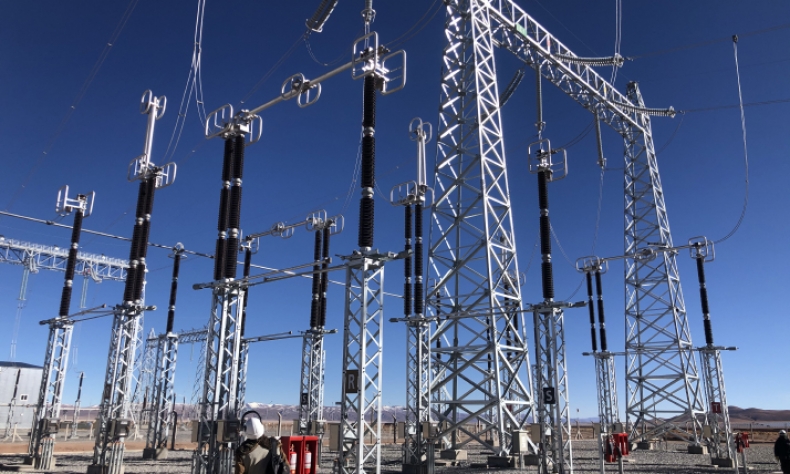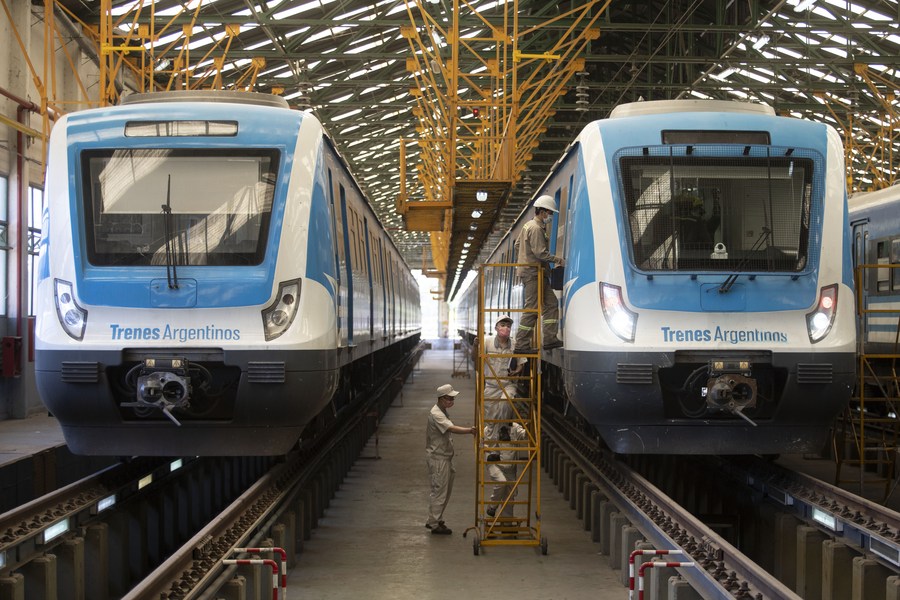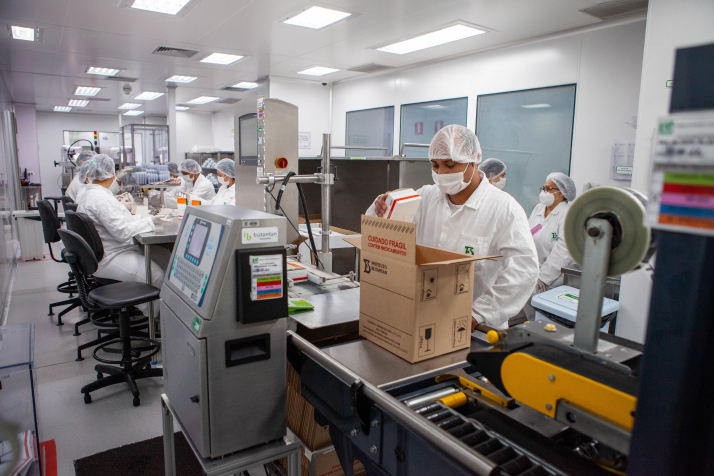How the Global Development Initiative is Becoming a Reality in Latin America

At present, when forces contrary to multilateralism and the democratization of the international system seek to impede the advances made in China-LAC relations, it is always opportune to remember the achievements already made.
In its first policy paper on Latin America and the Caribbean (LAC), published in 2008, the Chinese Government said it views its relations with the region from a strategic point of view, covering cooperation in several areas. Under the leadership of President Xi Jinping, this relationship has been held in even greater importance. Xi has visited Latin America five times since assuming the presidency in 2013.
Xi’s first visit as head of state to several Latin American countries occurred in 2013. He participated in the Sixth BRICS Summit in Fortaleza, Brazil, the next year.
The year 2015 was an important milestone in the China-LAC relationship, as it was when the First China-CELAC (Community of Latin American and Caribbean States) Forum took place in Beijing. During the event, Xi proposed that the volume of trade between the two sides reach $500 billion in the next 10 years and that Chinese direct investment in Latin America reach $250 billion.
In 2016, Xi visited Chile, Ecuador and Peru and attended the 24th Economic Leaders’ Meeting of Asia-Pacific Economic Cooperation in Lima, Peru. It was Xi’s third trip to Latin America. In November that year, the Chinese Government published the second document on China’s policy toward the LAC, expressing its determination to take bilateral cooperation to a new height.
In January 2018, on the occasion of the Second China-CELAC Forum, held in Santiago, Chile, Xi invited Latin American countries to participate in the Belt and Road Initiative and recalled that China collaborated with more than 80 development projects in the region. Among the documents approved at this event was the Special Declaration on the Belt and Road Initiative, where China stated that it considers the LAC countries as part of the natural extension of the Maritime Silk Road. They are indispensable participants in the Belt and Road cooperation.
In 2021, at the Third China-CELAC Forum, cooperation with an emphasis on infrastructure was reinforced. It resulted in the announcement of the China-CELAC Joint Action Plan for Cooperation in Key Areas (2022-24). Due to the pandemic, Xi attended the forum via video link.

1+3+6
The China-CELAC Forum has become the main channel for diplomatic dialogue and cooperation between China and the entire LAC region, with the Belt and Road Initiative being a conceptual program that complements the pragmatic “1+3+6” cooperation format with the region. The number “1” refers to the Joint Action Plan; the number “3” corresponds to the driving forces of this cooperation: trade, investment and finance; and number “6” refers to priority sectors for cooperation: energy, natural resources, construction, agriculture, manufacturing industry, scientific and technological innovation and information technology.
Interlocking with “1+3+6” is the 3×3 productive capacity cooperation model, which refers to joint construction of three interaction channels for the development of the China-CELAC relationship. They are 1) the logistics, electricity and information channels; 2) the realization of interaction between companies, society and governments; and, 3) the expansion and development of the three financing channels, which are funds, credit and insurance.
Trade with China and Chinese investment in the LAC region are a very concrete reality. It is not by chance that 21 of the 32 CELAC members are part of the Belt and Road Initiative. In South America, Argentina (which joined in February 2022), Bolivia, Chile, Ecuador, Guyana, Peru, Suriname, Uruguay and Venezuela have joined the initiative. Brazil, Colombia and Paraguay are not formally participating but are beneficiaries of significant Chinese investment. It can be said that the initiative extends to the LAC, and Chinese foreign policy sees this region as a large bloc to be articulated by an intercontinental infrastructure.
According to the China Global Investment Tracker, maintained by the American Enterprise Institute and the Heritage Foundation, China’s investment in the LAC from 2005 to 2021 totaled $140 billion, with Brazil being the largest recipient with $64 billion and Peru with $25 billion.
China has bilateral free trade agreements with several countries in the LAC. It is worth mentioning those with Chile, Costa Rica and Peru, countries bordering the Pacific Ocean, which were signed respectively in 2005, 2009 and 2010. The Chinese Government is negotiating free trade agreements with Colombia, Ecuador and Uruguay.
China has strategic partnerships with Argentina, Brazil, Chile, Ecuador, Mexico, Peru and Venezuela.
Argentina, Brazil, Chile, Ecuador, Peru and Uruguay are members of the Asian Infrastructure Investment Bank, a China-initiated multilateral development institution. Bolivia and Venezuela are prospective members. On the other hand, China is a voting member of the Inter-American Development Bank and the Caribbean Development Bank.
Major partners
China has become the leading trading partner for Brazil, Chile, Peru and Uruguay and the second largest partner for most other LAC countries. Chinese direct investment in Latin America in 2020 totaled around $17 billion and was focused on the energy and infrastructure sectors. Trade with Latin America jumped from $180 billion in 2010 to $450 billion in 2021, with China maintaining a surplus of $7 billion.

China has been Brazil’s largest trading partner since 2009. According to the China Global Investment Tracker, Brazil was the country that received the most Chinese investment in the world in 2021, with a share of 13.6 percent of the total.
Analysts predict that the China-LAC trade could exceed $700 billion by 2035 and China could surpass the United States as the region’s main trading partner.
Latin American countries mainly export natural resources to China, especially minerals (42 percent of the total), soybeans (16 percent), fuel and oil (10 percent), meat (6 percent) and copper (5 percent); Chinese exports to the region are primarily electrical machinery and equipment, mechanical appliances, parts and motor vehicles. This situation is viewed with concern by Latin Americans. The challenge for governments and companies in the region is to reshape the relationship with China in a way that favors the technological and industrial development of all countries in the bilateral relationship with China.
Except for the risks of reprimarization of exports, the expansion of trade with China contributed to some Latin American economies being able to accumulate foreign exchange and, thus, being able to face the consequences of the 2008 financial crisis, aggravated by the emergence of COVID-19.
The China Development Bank and the Export-Import Bank of China have jointly lent around $137 billion to Latin American governments, primarily to finance energy and infrastructure projects. Chinese commercial banks have also increased their presence in the LAC. The principles of reciprocity and mutual benefits governing South-South cooperation are present in China’s relationship with Latin American countries.
The Global Development Initiative proposed by Xi converges with the guidelines of the policy paper for the LAC. At present, when forces contrary to multilateralism and the democratization of the international system seek to impede the advances made in relations between China and the LAC, it is always opportune to remember the achievements already made. The Global Development Initiative is a proposal to resume global development in a sustainable, peaceful and inclusive way.
The author is head of the Center for Brazil-China Studies at FGV Law School in Rio de Janeiro, Brazil.
 Facebook
Facebook
 Twitter
Twitter
 Linkedin
Linkedin
 Google +
Google +










